- Press Release & Public Service
Press Release & Public Service
Peer-reviewed journal articles
| 2020 |
#Otte, J.M. and Laufer-Meiser, K. The true superheroes: Microorganisms survive it all! Frontiers for Young Minds (in review) |
|
#Otte, J.M. Sharing electrons: An extraordinary friendship between bacteria. Front. Young Minds. 8:543259. doi: 10.3389/frym.2020.543259. |
|
| 2019 |
Otte, J.M., Blackwell, N., Ruser, R., Kappler, A., Kleindienst, S., Schmidt, C. (2019) N2O formation by nitrite-induced (chemo)denitrification in coastal marine sediment. Scientific Reports, 9:10691. doi:10.1038/s41598-019-47172-x |
| 2018 |
Bryce, C., Blackwell, N., Schmidt, C., Otte, J.M., Huang, Y., Kleindienst, S., Tomaszewski, E., Schad, M., Warter, V., Peng, C., Byrne, J.M., Kappler, A. (2018) Microbial anaerobic Fe(II) oxidation – ecology, mechanisms and environmental implications. Environmental Microbiology. 20, 10: 3462-3483. doi:10.1111/1462-2920.14328 |
| Otte, J.M., Soos, V., Rughöft, S., Maisch, M., Kappler, K., Kleindienst., S, Schmidt, C. (2018) Sterilization impacts on marine sediment - Are we able to inactivate microorganisms in environmental samples? FEMS Microbial Ecology. 94(12):fiy189 doi:10.1093/femsec/fiy189 | |
|
Otte, J.M., Harter. J., Laufer, K., Blackwell, N., Kappler, A., Kleindienst, S. (2018) The distribution of active iron cycling bacteria in marine and freshwater sediments is decoupled from geochemical gradients. Environmental Microbiology. 20, 7: 2483–2499. doi:10.1111/1462-2920.14260 |
|
| 2015 |
Otte, J., Mall, A., Schubert, D.M., Könneke, M., Berg, I.A. (2015) Malonic semialdehyde reductase from the archaeon Nitrosopumilus maritimus, an enzyme involved in the autotrophic 3-hydroxypropionate/4-hydroxybutyrate cycle. Applied Environmental Microbiology. 81, 5: 1700-1707. doi:10.1128/AEM.03390-14 |
Press Release
| Date | Title | Source |
|
January 2021 |
In der ganzen Welt zu Hause - Mikrobiologin Julia Otte erforscht die Tiefsee - Steter Jobwechsel und berufliche Schiffreisen |
Auswandererhaus, Bremerhaven, Nordsee-Zeitung |
| May 2020 |
Gehalt: Wie viel verdient eine Meeresbiologin? |
|
| June 2019 | Das dunkle Paradies | |
| June 2019 | Das dunkle Paradies | |
| August 2019 | Berufsbild "Marine Mikrobiologie" |

Visitors Tour (2/20) for guests from Tokyo University and TUBergakademie Freiberg
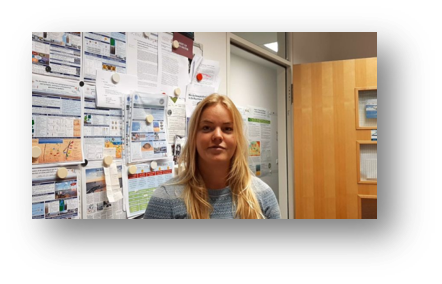
Video (9/20): @ I’m a Geomicrobiologist working on the risks of deep-sea mining for “I’m a Scientist” Mini-Series for 4 Venir, Inc. a non-profit organization in Merced (University of California, US) @YouTube
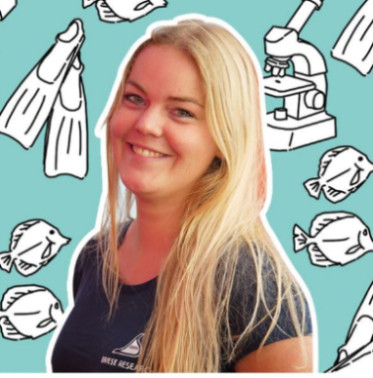
Public Service
Frontiers for Young Minds - Otte, 2020
Did you know that iron is one of the most important elements on Earth? It is assumed that life evolved close to iron sources. This means, that the earliest life forms - and therefore oldest creatures - were able to eat iron. These tiny organisms called microorganisms. Iron microorganisms can be found widespread in our environment. Until now, it was known that iron microorganisms occur in coastal sediments, which is mainly muddy sand. But less was known about their vertical distribution in these sediments. Therefore, in this study, we investigated the vertical distribution and variety of different types of iron microorganisms. It was expected to find microorganisms spread related to their favorite food source, which we could show in our study. However, we discovered that iron microorganisms live independent from their favorite food: iron, oxygen, light! This independence might be explained by an unexpected extraordinary friendship with a “living cable”.

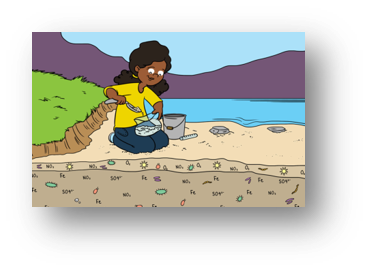
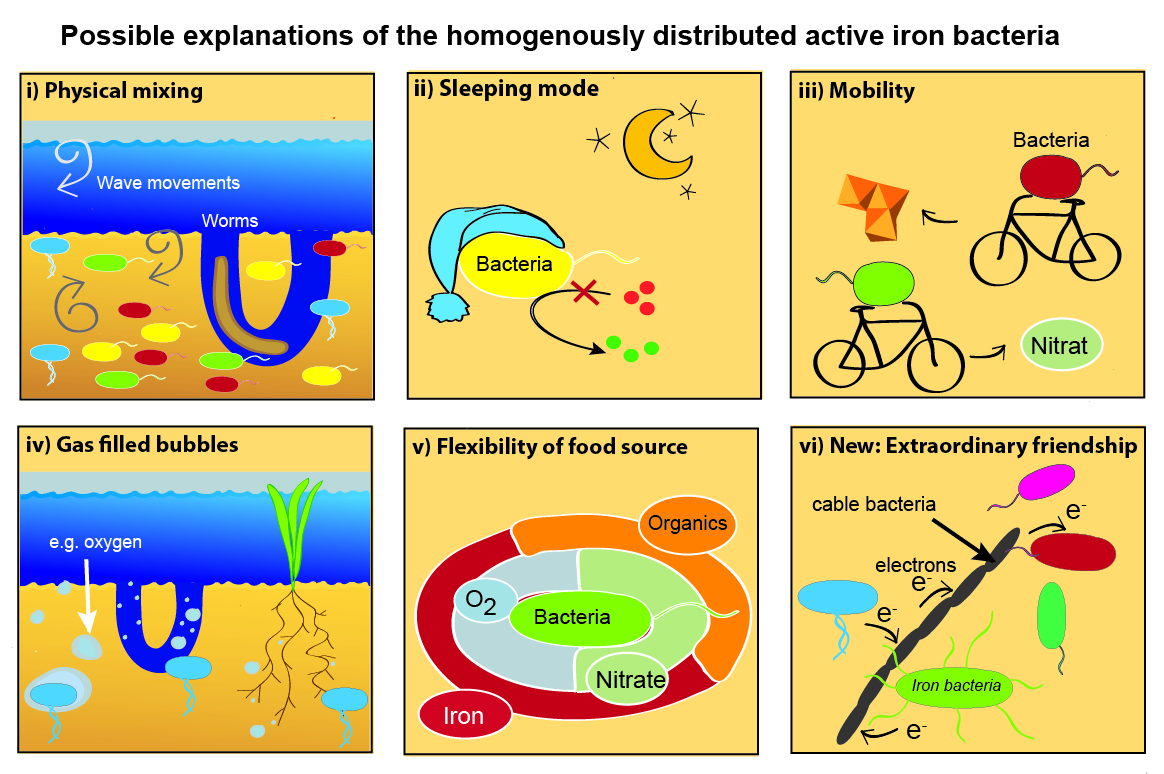

Frontiers for Young Minds - Otte, Laufer-Meiser 2021
The true superheroes: Microorganisms survive it all! Microorganisms can live far up in the clouds and also deep in the Earth`s crust. This means these tiny organisms have adapted to all special habitats on Earth. When scientists want to study all special habitats they can focus on the microorganisms and their biological reactions or on the non-living components like minerals and geochemical reactions. Therefore, it is the main challenge for scientists to distinguish between biological and geochemical processes in environmental samples. A simple technique is to eliminate all microorganisms in these samples to study the geochemical processes. The “killed” sample is therefore a control setup in environmental studies. Until now, less was known about effective sterilization methods while ideally not changing the geochemical properties of the environmental samples. For this study, we used traditional sterilization techniques which are commonly used to clean and sterilize food and hospital equipment. We exposed marine sediment to i) heat and pressure, ii) gamma-radiation or iii) toxic chemicals and determined to which extent the genetic information, microbial productivity and community were affected. For laboratory studies with environmental samples it is still a challenge to gain complete sterile conditions because a few microorganisms survive high pressure, high temperature, radiation, and toxic chemicals!
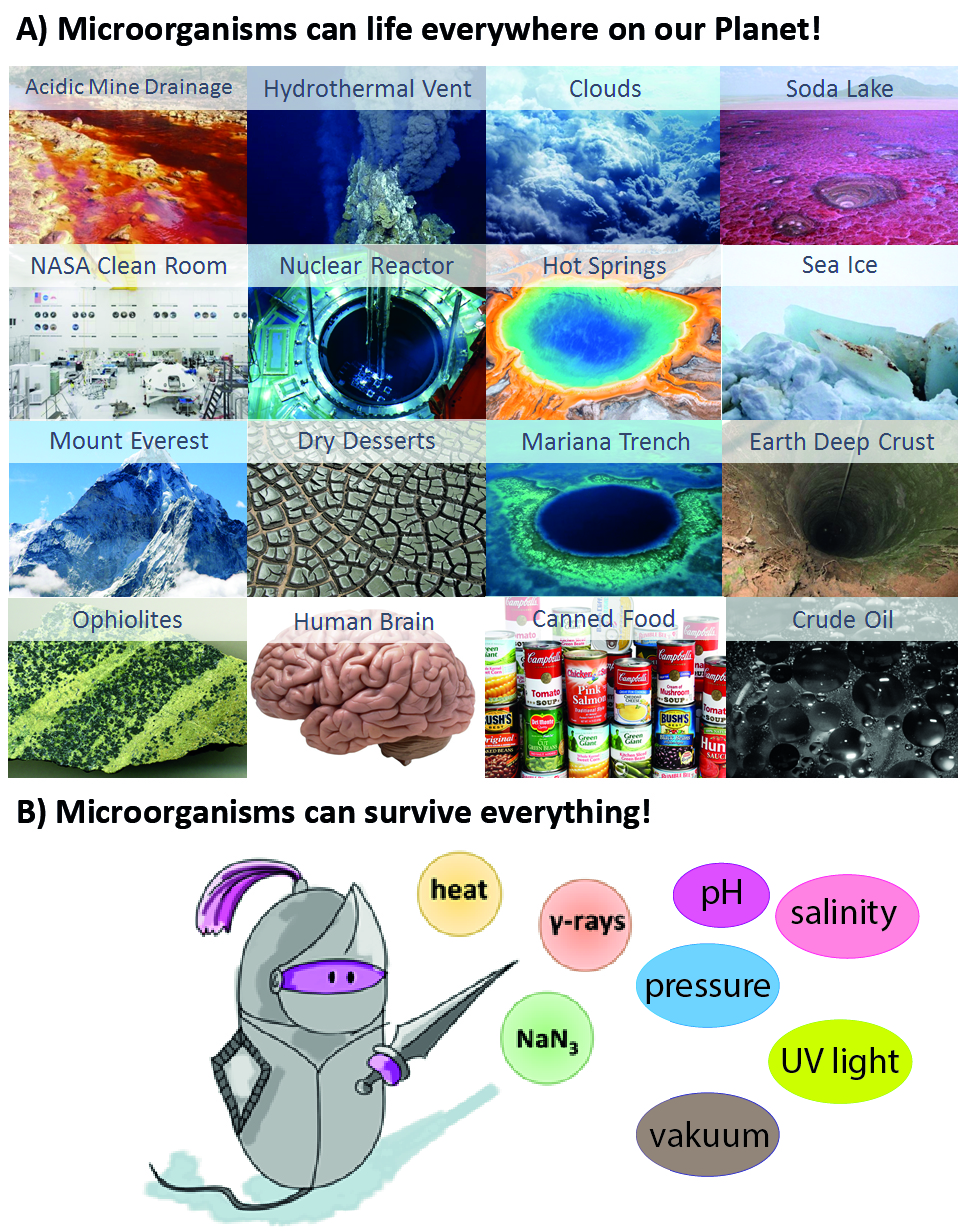
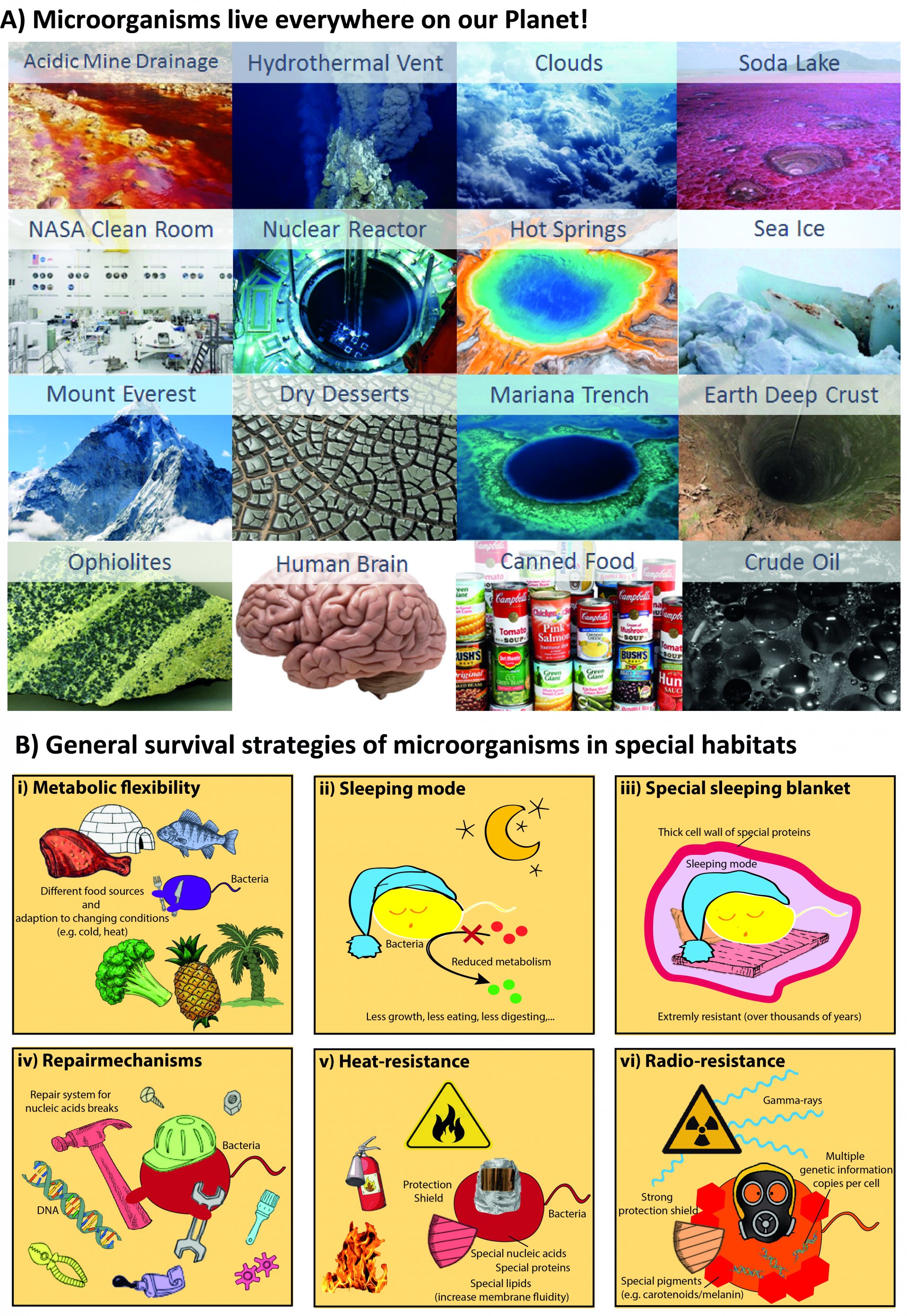
The microbial world in the deep sea
27.5.2019; Cruise Blog
Hard Rock and Heavy Metal: join the microbial deep-sea party!
26.5.2019; Cruise Blog
Treasures of the Deep
29.4.2019; Cruise Blog
https://www.oceanblogs.org/eadsm/2019/04/29/schatze-der-tiefsee-treasures-of-the-deep/
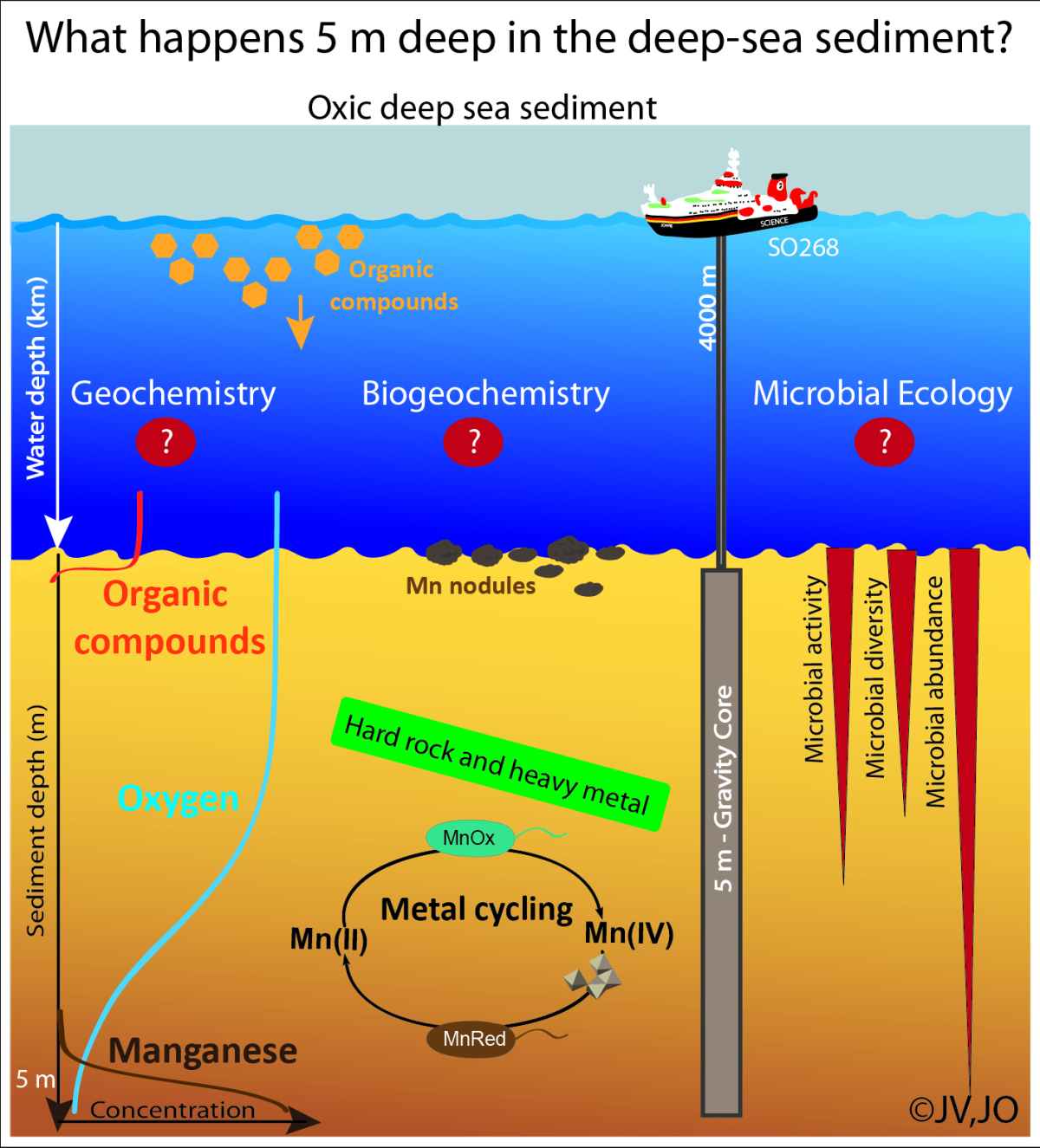
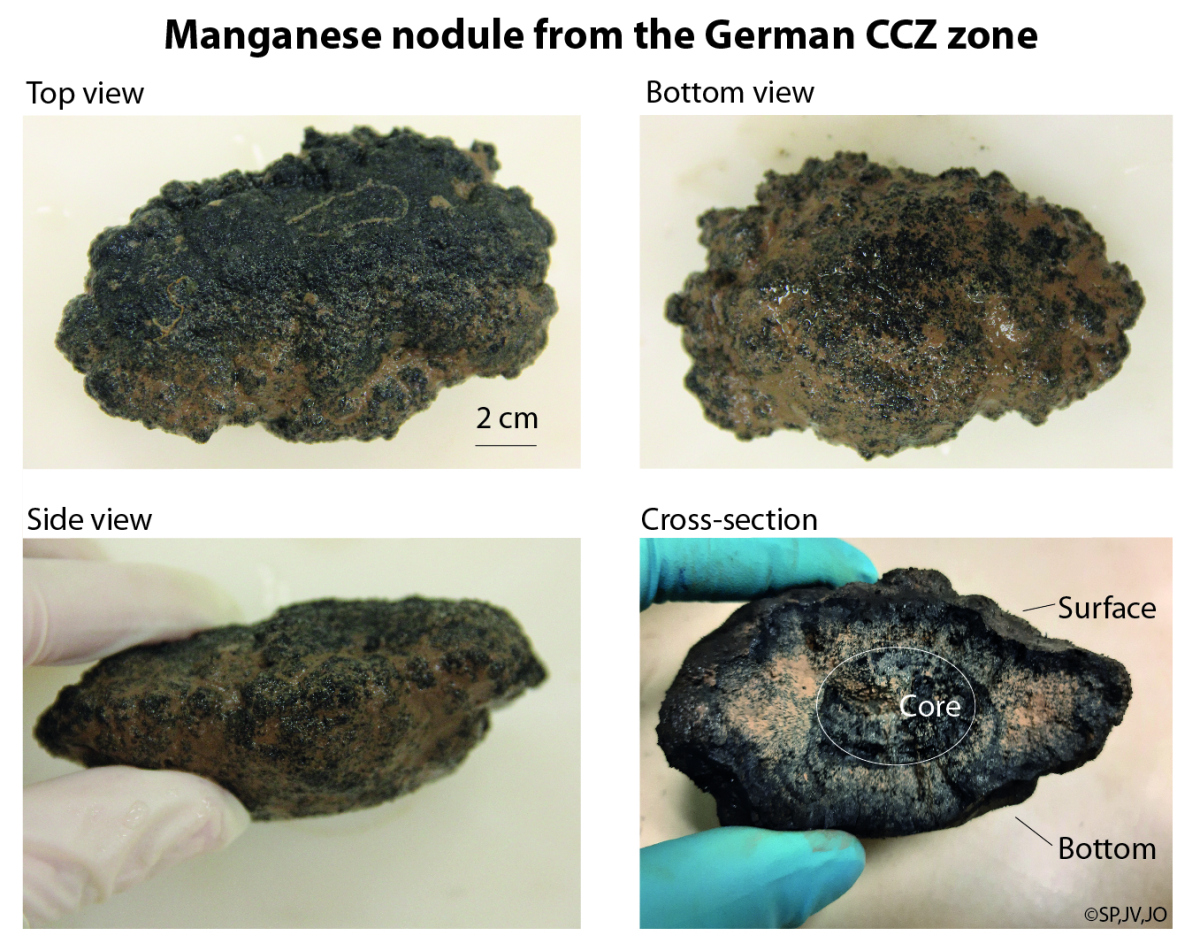
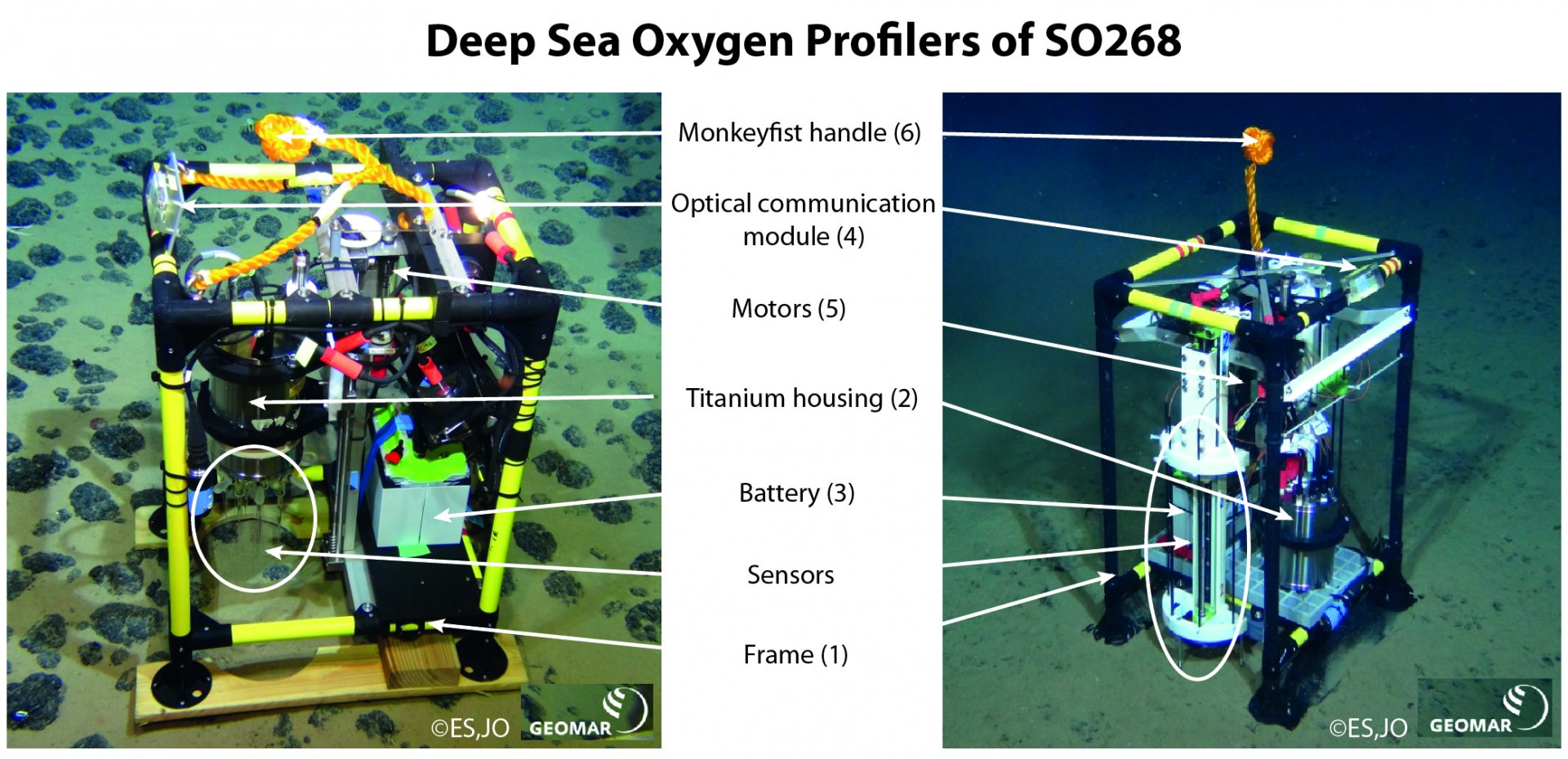
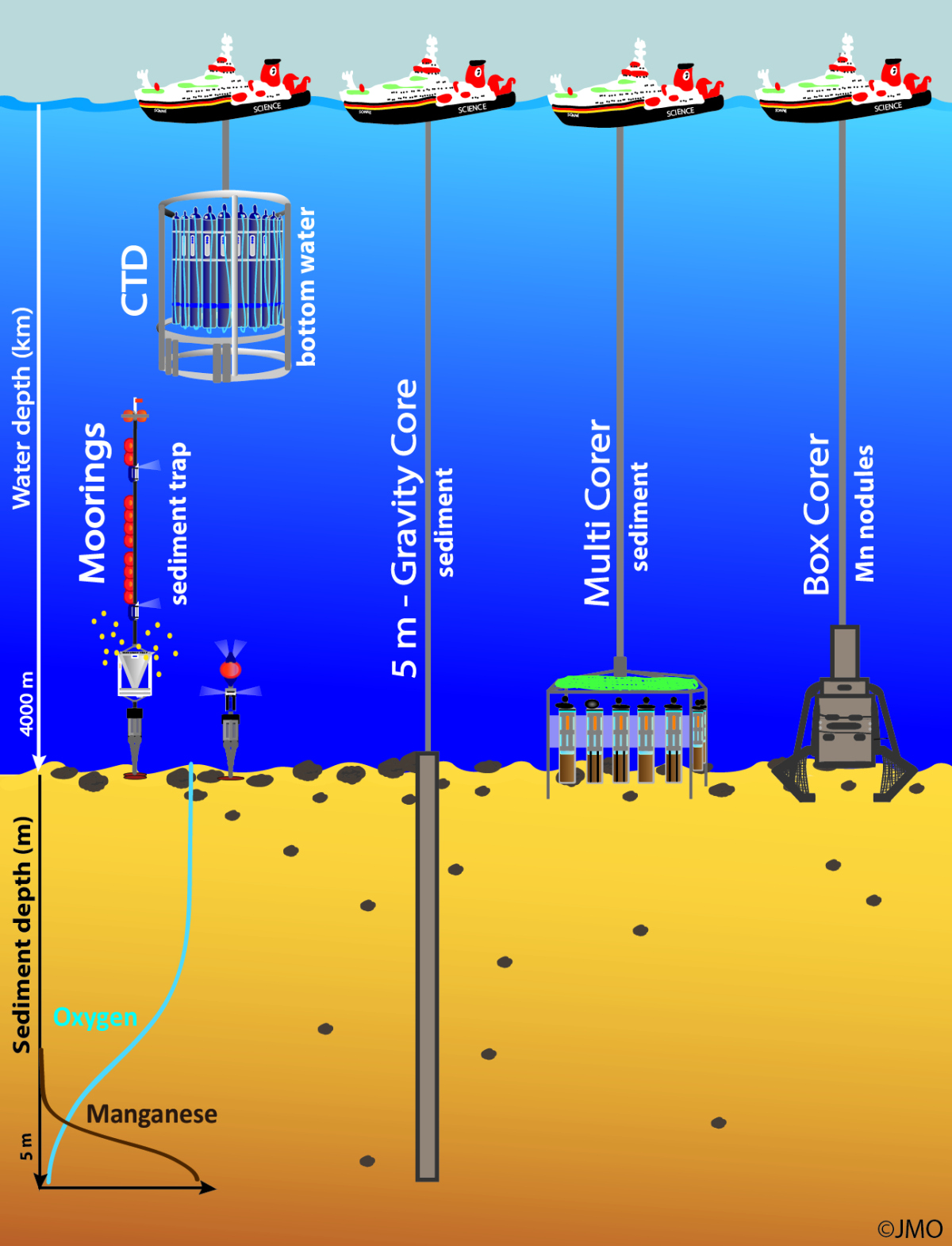
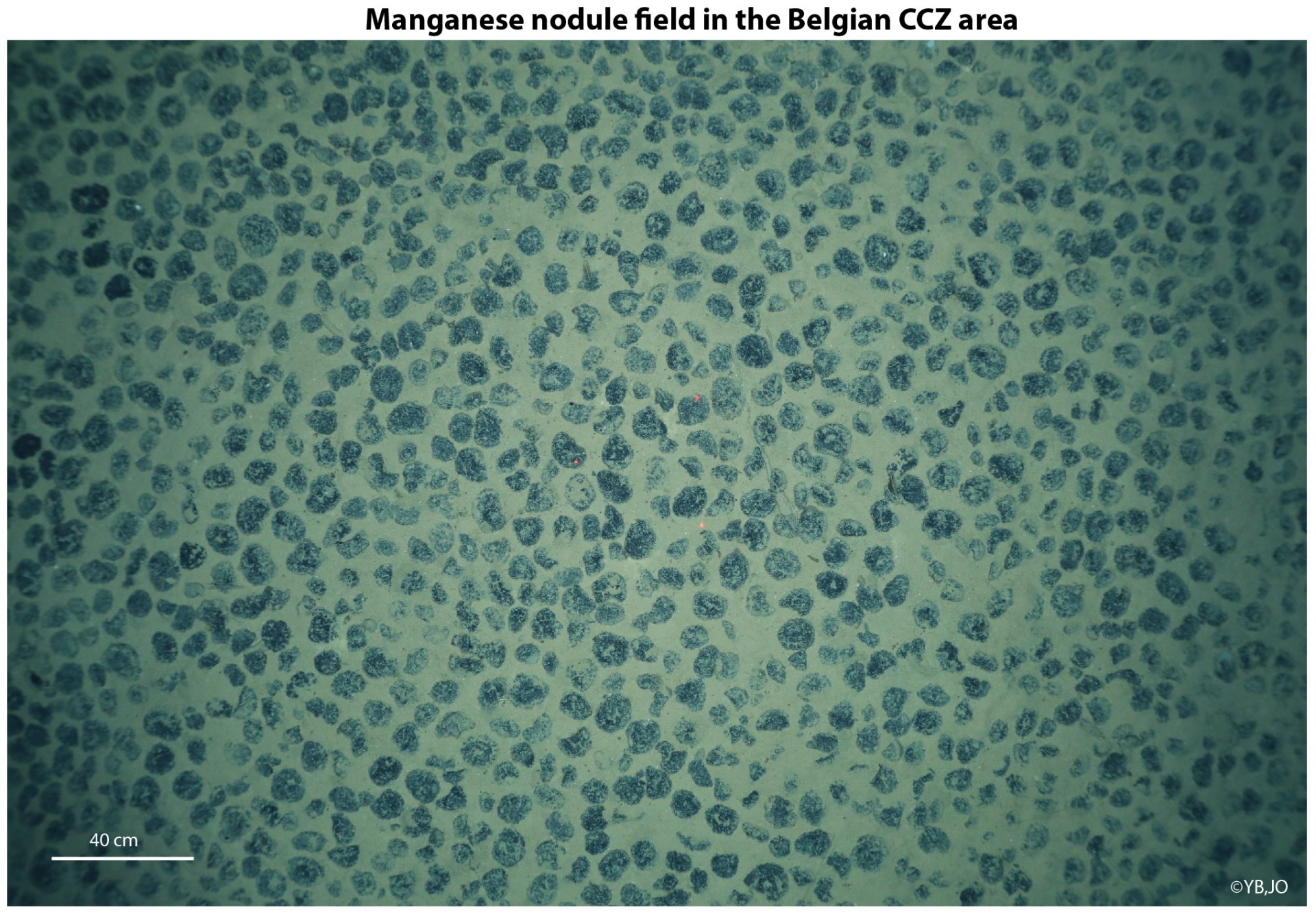
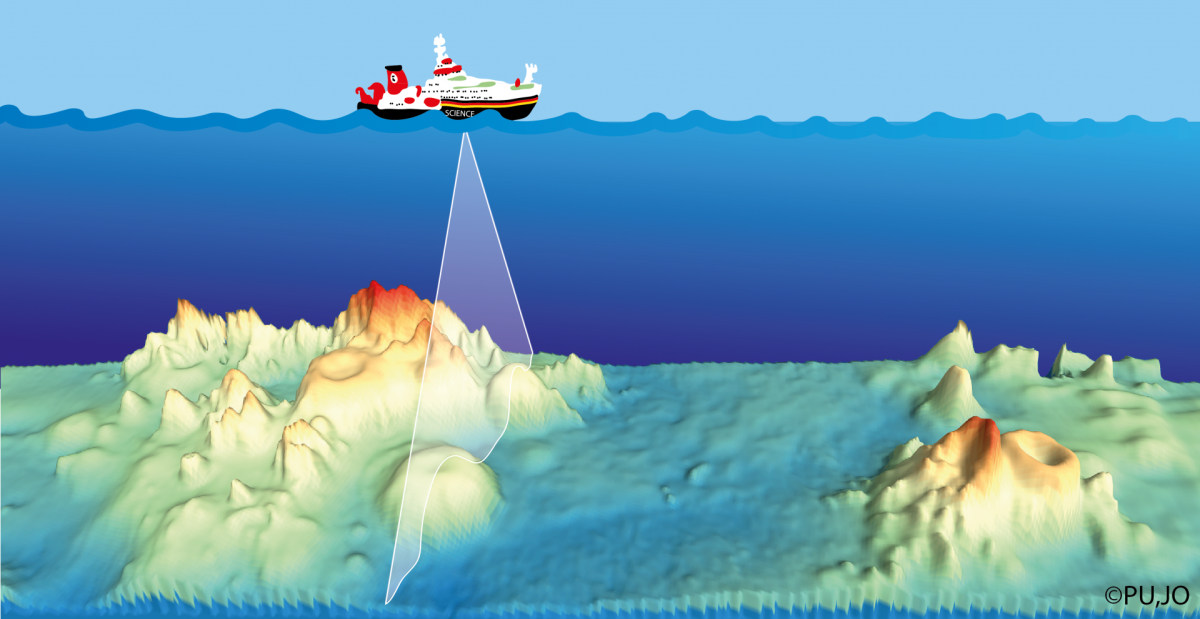
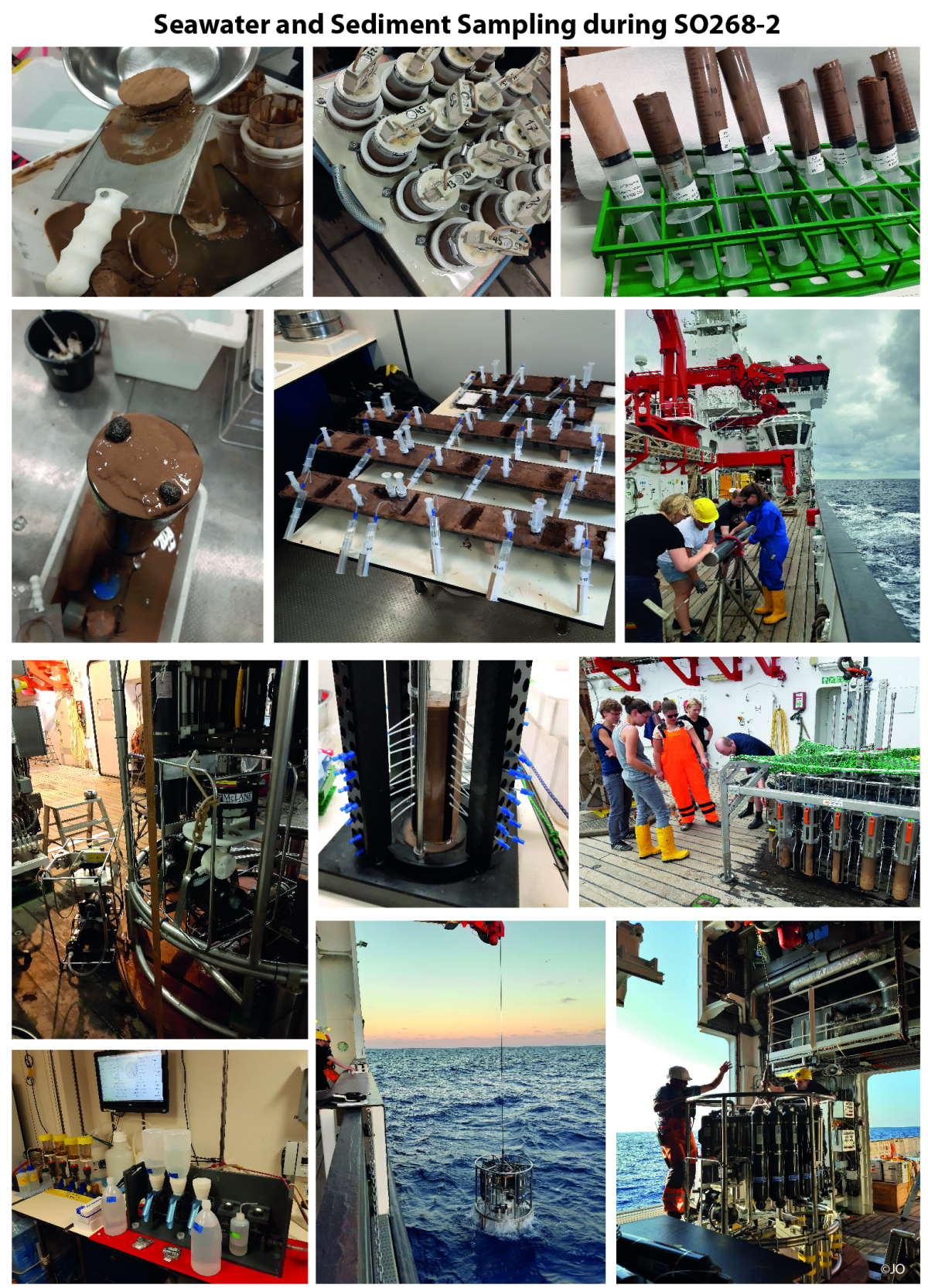
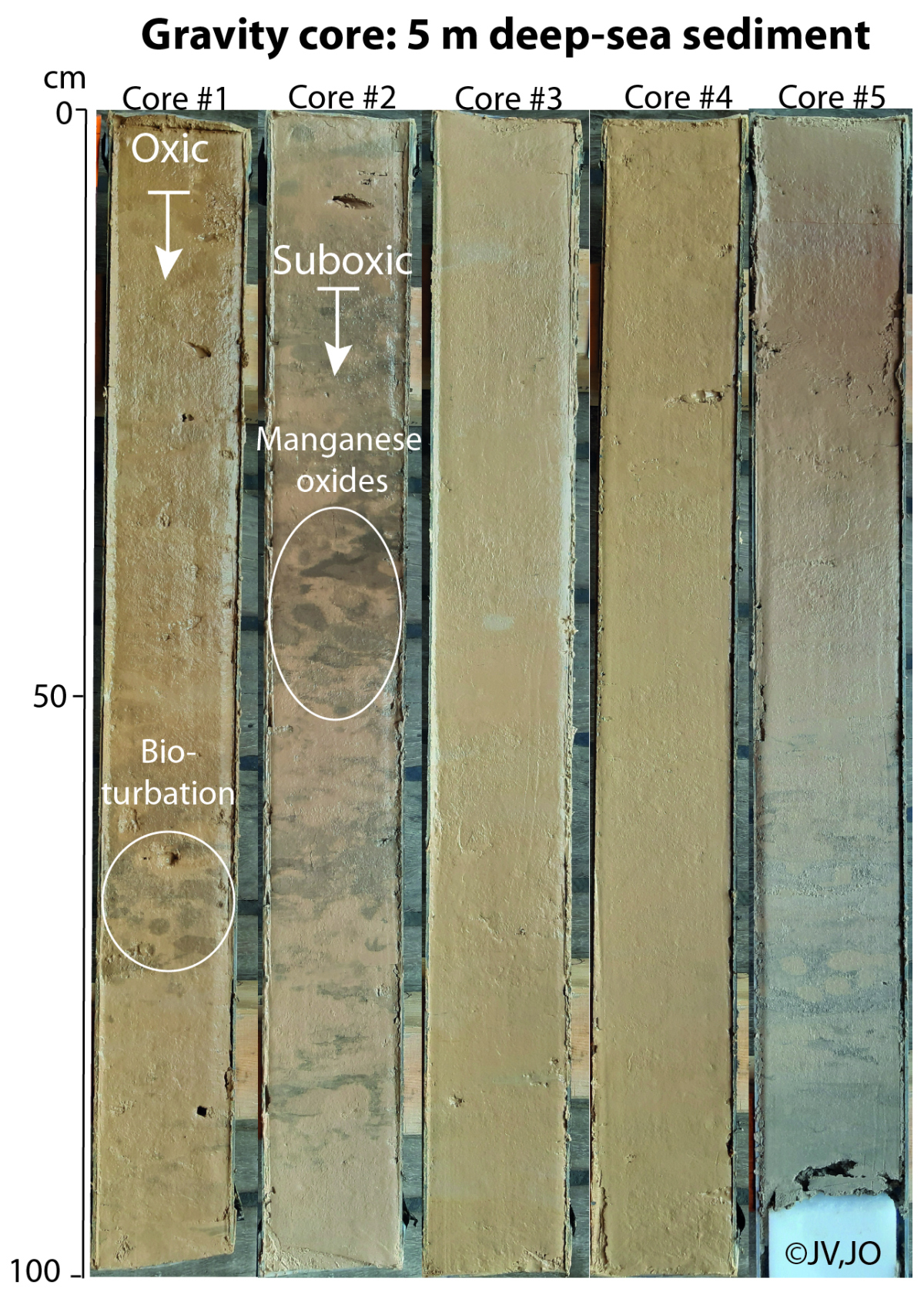
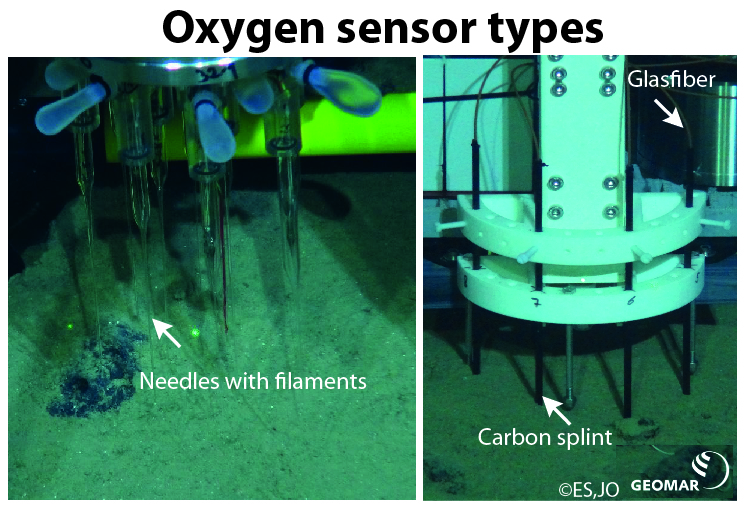
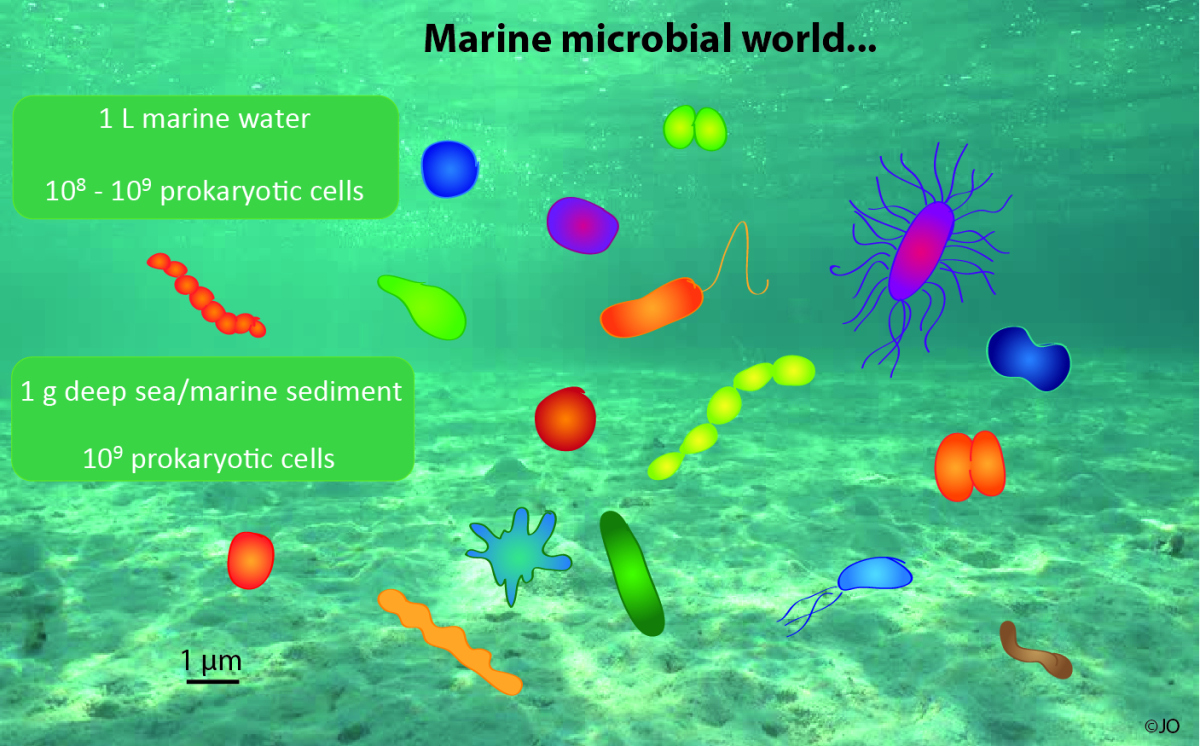
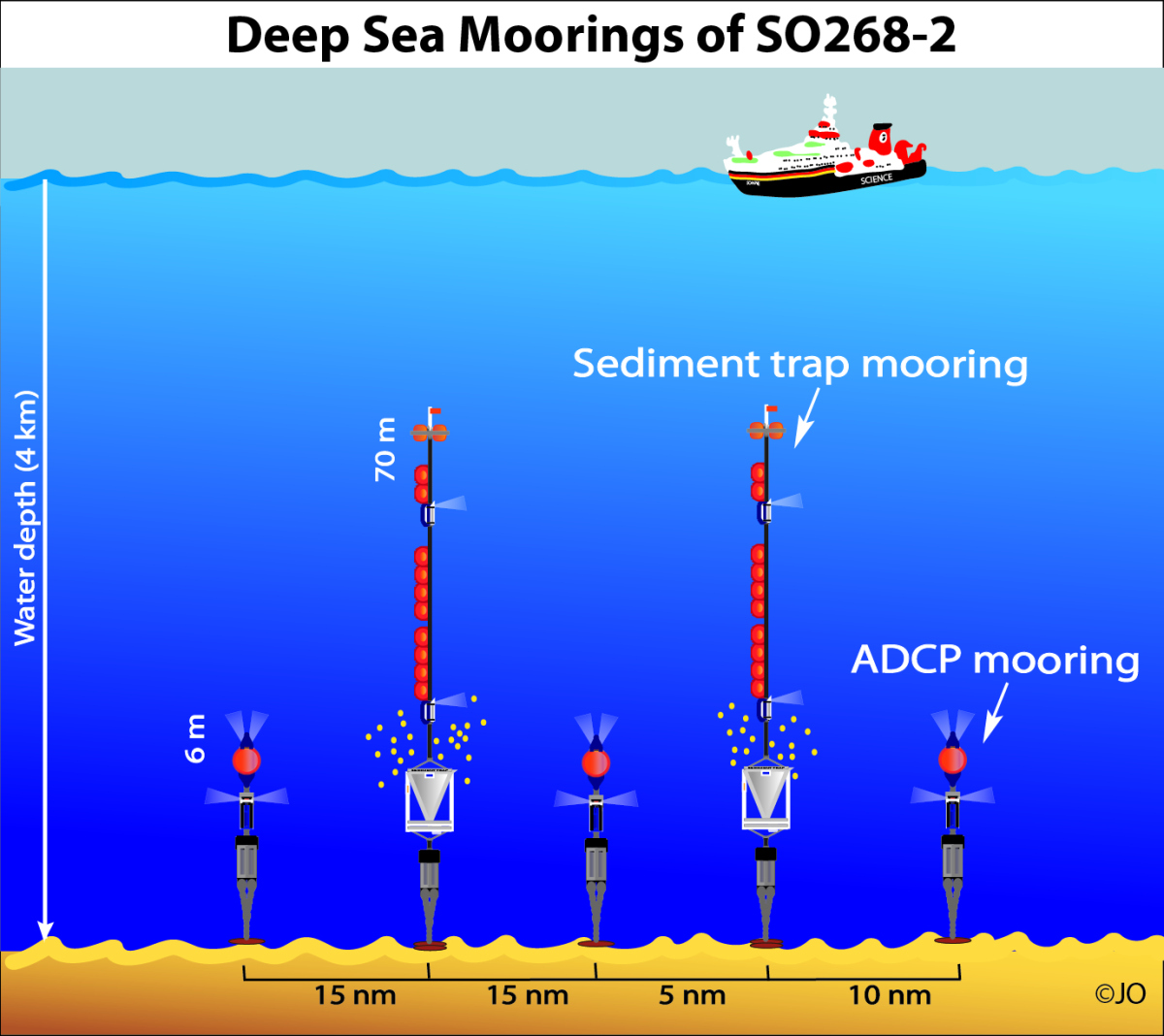
Theses
| 2018 | Otte, J.M. PhD thesis: Iron-cycling microorganisms in marine and freshwater sediments and implications for greenhouse gas emission. University of Tübingen, Germany |
| 2014 | Otte, J.M. MSc thesis: Malonic semialdehyde reductase from the ammonia oxidizing Archaeon Nitrosopumilus maritimus. University of Freiburg, Germany |
Poster presentations and Invited talks
| 2020 |
Otte, J.M., Molari, M., Yapan, B. C., Bodur, Y., Volz, J. B., Janßen, F. & Wenzhöfer, F.Microbial and viral communities of the deep seafloor sediment and manganese nodules from the CCZ, Pacific. Ocean Science Meeting in San Diego (USA) |
|
University of California (Merced, USA), Dr. Michael Beman (Associate Professor) Talk about Biogeochemical Iron and Manganese Cycling in marine sediments |
|
| 2019 |
Otte, J.M., Molari, M., Yapan, B. C., Bodur, Y., Volz, J. B., Janßen, F. & Wenzhöfer, F. Microbial and viral communities of the deep seafloor sediment and manganese nodules from the CCZ, Pacific. Symposium of Aquatic Microbial Ecology (SAME) 16 in Potsdam (Germany) |
|
China University of Geosciences (Wuhan, China), Dr. Jing He (Associate Professor) Lecture about the Deep Sea & Talk about Manganese nodules from the Deep Sea and Environmental implications of Deep Sea Mining – Expedition SO268 |
|
|
China West Normal University (Nanchong, China), Prof. Xiao Xu (Dean) Lecture about the Deep Sea & Talk about Manganese nodules from the Deep Sea and Environmental implications of Deep Sea Mining – Expedition SO268 |
|
|
Yangzhou University (Yangzhou, China), Dr. Miao Li (Associate Professor) Talk about Manganese nodules from the Deep Sea and Environmental implications of Deep Sea Mining – Expedition SO268 |
|
| 2018 |
Otte, J.M., Schmidt, C., Ruser, R., Blackwell, R., Kleindienst, S., Kappler, A. (2018) Cause and effects of N2O formation by nitrite-induced (chemo)denitrification in coastal marine sediment. International Symposium on Microbial Ecology (ISME), Leipzig, Germany |
|
Otte, J.M., Harter, J., Laufer, K., Blackwell, N., Kappler, A., Kleindienst, S. (2018)The distribution of active iron-cycling bacteria in marine and freshwater sediments is decoupled from geochemical gradients. Jahrestagung für Allgemeine und Angewandte Mikrobiologie (VAAM), Wolfsburg, Germany |
|
| 2017 |
Kappler, A.*, Otte, J.M., Ruser, R., Schmidt, C., Kleindienst, S., Harter, J. & Jorgensen, B.B. (2017) Nitrite as a key intermediate in N2O formation in iron(II)-containing and carbon-rich marine sediments. Goldschmidt conference, Paris France |
|
Soos, V.*, Otte, J.M., Maisch, M., Kleindienst, S., Kappler, A., Schmidt, C. (2017) Can we kill microbial life with standard techniques? Quenstedt-Geosymposium, Tübingen, Germany |
|
| 2016 |
Otte, J.M., Laufer, K., Harter, J., Kleindienst, S., Schmidt, C., Kappler, A. (2016) Formation of the greenhouse gas N2O by biotic & abiotic reduction of nitrite with Fe(II) in marine sediments. PhD poster contest: 1st prize. Quenstedt-Geosymposium, Tübingen, Germany |
| 2015 | Otte, J.M., Lockwood, C.L.*, Laufer, K., Nordhoff, M., Schaedler, F., Kleindienst, S., Schmidt, C., Kappler, A. (2015) Competition and interrelation of iron(II)-oxidizing microorganisms in marine and freshwater sediments. Goldschmidt conference, Prague, Czech Republic |